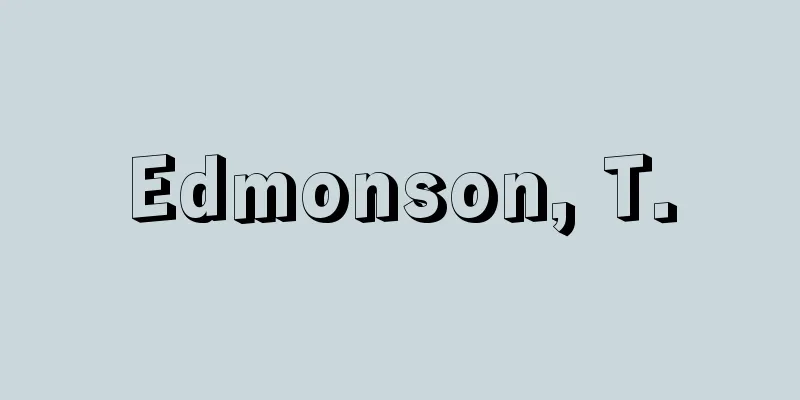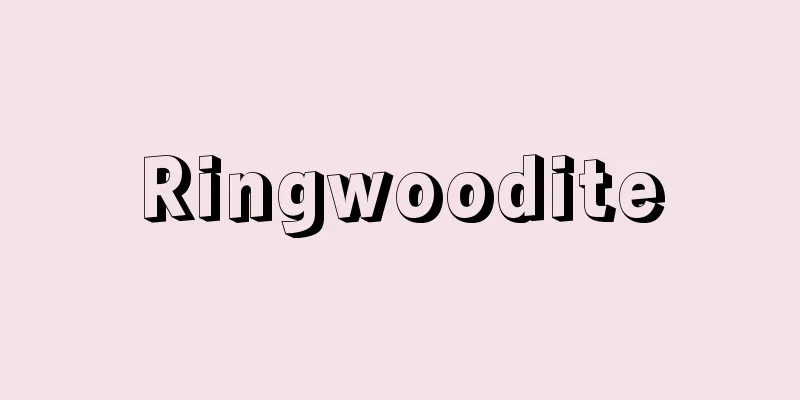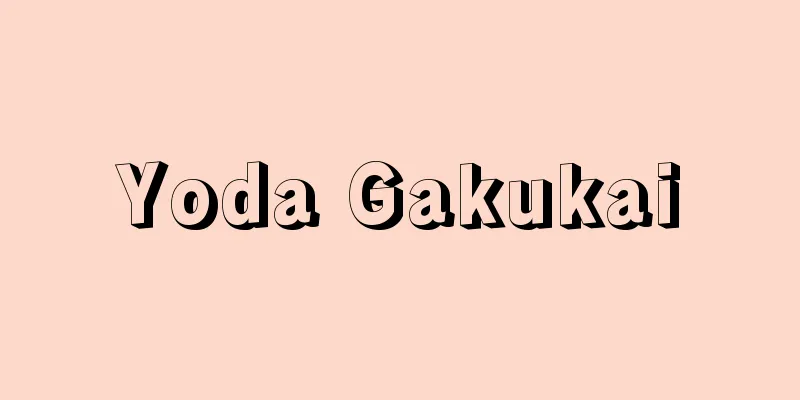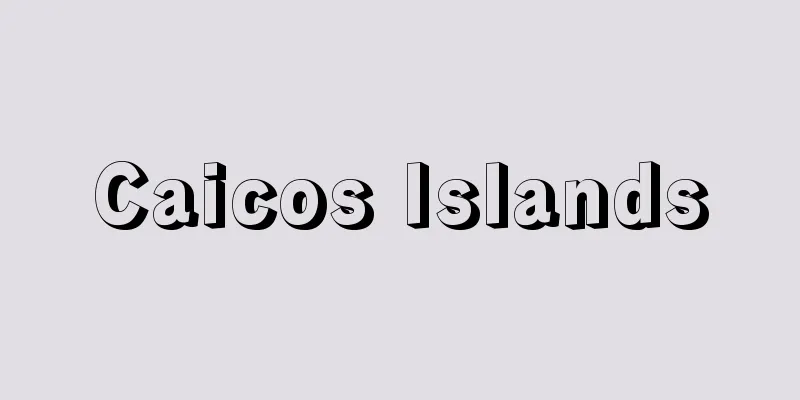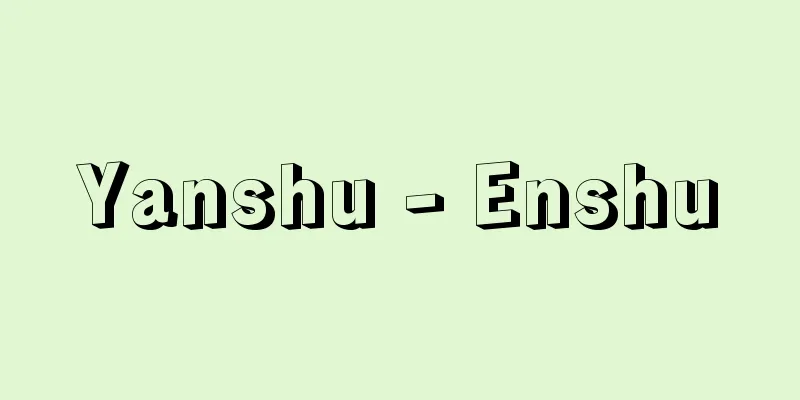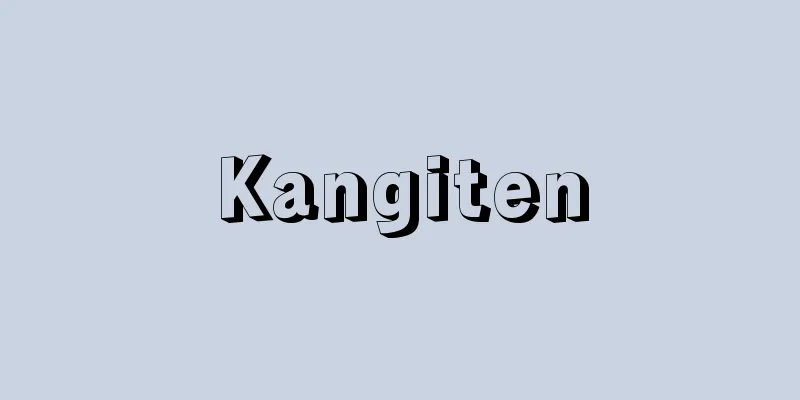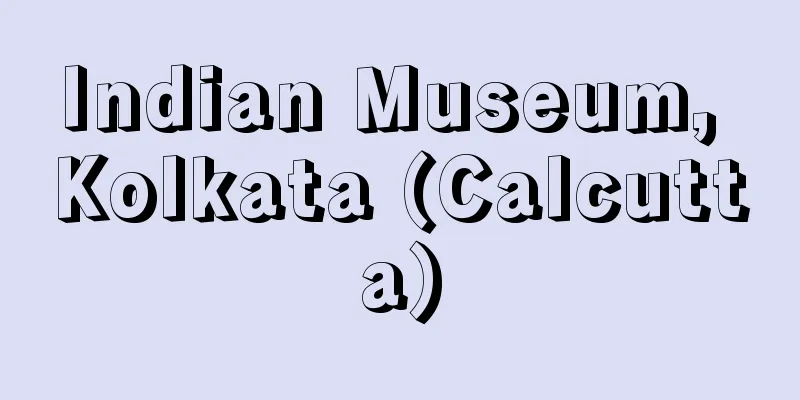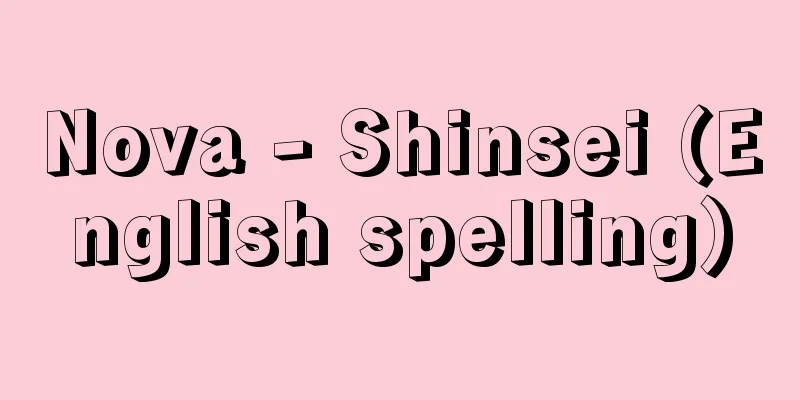Distance learning - tsuushinkyoiku
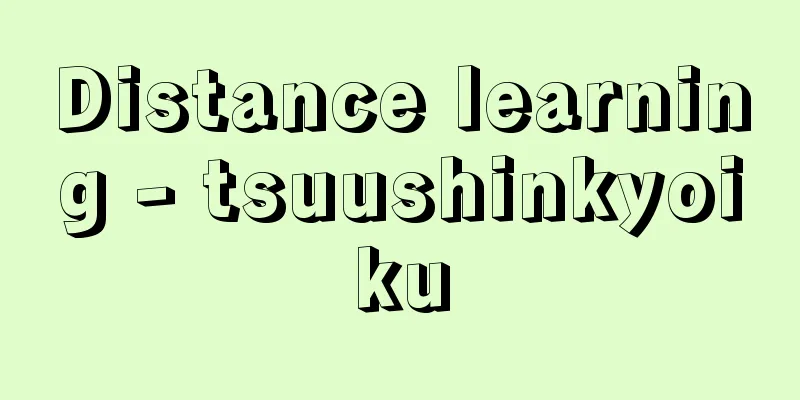
|
Correspondence education refers to a form of education that uses communication media such as mail, radio, and television. The greatest advantage of correspondence education is that it allows students to obtain education while working or working without having to attend an educational facility. From the perspective of the students, it is possible to avoid time and spatial constraints to a certain extent, and from the perspective of the provider, it is possible to economize on material and human resources by using existing facilities and staff in combination. Thus, correspondence education, along with part-time education, is considered a supplementary means to ensure equal educational opportunities, and therefore its importance has tended to decrease with the expansion of full-time education. However, correspondence education is an essential part of the education system in socialist countries due to the principle of combining real life and education, and in countries such as Australia and Mexico, where the population is scattered over a vast territory. Furthermore, since the 1970s, the rise of the lifelong education theory and the advancement of communication media have made it necessary to reposition correspondence education. [Toshiaki Kuwahara and Yoshinori Hirose] School correspondence courseCorrespondence education is broadly divided into school correspondence education and social correspondence education. Under the current system in Japan, school correspondence education is provided by universities and high schools. [Toshiaki Kuwahara and Yoshinori Hirose] University correspondence courseProblems with university correspondence education include the fact that it is limited to private universities, the lack of time for schooling (face-to-face classes), and the fact that individual learning can become monotonous and it is difficult to find enough time to study. With the enactment of the Open University Corporation Law on June 11, 1981, the Open University was opened in the 1985 academic year, ushering in a new era for university correspondence education. The Open University was established as a special corporation, and was established as an institution that would effectively utilize communication technologies such as television and radio to provide education in the era of the highly information-oriented society, in order to meet the needs of diverse learners throughout their lives. Students were selected based on documents from those aged 18 or older who could take the Open University's broadcasting classes, and no academic ability tests were required as entrance exams, allowing a relatively wide range of students to be accepted. Initially, the target area for the Open University was limited to the Kanto region, but in 1998, nationwide broadcasting began via CS digital broadcasting using communication satellites. For students taking all courses aiming to obtain a bachelor's degree, the university began accepting students at learning centers nationwide from the second semester of the same year, providing more opportunities to take courses. Students' course enrollment methods vary depending on their learning objectives, motivations, and admission qualifications, and are divided into four types: (1) all-course students, (2) elective course students, (3) subject students, and (4) special audit students. Future issues include the devising and implementing educational methods that utilize the Internet and other multimedia. According to the 2002 Basic School Survey by the Ministry of Education, Culture, Sports, Science and Technology, there are approximately 89,300 students enrolled at the Open University of Japan. Combined with the approximately 137,000 students enrolled in correspondence courses at private universities, this means that there are approximately 226,300 students receiving university-level correspondence courses. Additionally, there are approximately 25,000 students enrolled in correspondence courses at junior colleges. [Toshiaki Kuwahara and Yoshinori Hirose] Graduate School Correspondence CourseAccording to a 2002 School Basic Survey, distance learning courses for graduate schools, which began in 1999, are being offered at 14 graduate schools, including the Open University of Japan, which began accepting students for its master's course in April of that year, with approximately 1,800 students registered. In the future, it is expected that the number of distance learning courses set up and operated by overseas schools and organizations, utilizing the Internet and other methods, will increase, and that an increasing number of existing domestic graduate schools will also be offering such distance learning courses. [Toshiaki Kuwahara and Yoshinori Hirose] High school correspondence courseCorrespondence education for high schools started with the inauguration of the new high schools in 1948 (Showa 23), but was initially positioned as a supplementary method to the part-time course. It was not until April 1980 that a notice from the Vice Minister allowed students to graduate from high schools solely through correspondence education. Since then, measures have been taken, such as the establishment of independent correspondence high schools, a system in which other high schools are made collaborating schools to facilitate face-to-face instruction, the use of radio and television programs to reduce face-to-face instruction time, cooperation between part-time and correspondence high schools and technical education facilities, and the introduction of wide-area correspondence education, which continue to the present day. As the rate of progression to full-time high schools increases, the number of students enrolled has been on a downward trend since its peak in 1971, but the use of correspondence high schools by the elderly is on the rise. According to the Basic School Survey of the Ministry of Education, Culture, Sports, Science and Technology in 2002, the number of students at correspondence high schools is approximately 107,500 at public schools and approximately 84,500 at private schools, totaling approximately 192,000. In terms of age breakdown, the majority were in their teens at about 130,000, followed by those in their twenties at about 46,000, then those in their thirties and forties at a combined total of about 11,000, and those in their fifties and sixties at about 4,000. The number of dropouts in the same year was just over 15,000, the number of students who acquired credits was about 111,300, and the number of students who graduated was 36,000. The rate of graduates who went on to university or other institutions was 11.0%, the rate of those who went on to vocational schools was 21.3%, and the employment rate was 22.1%. In this age of advanced information technology and lifelong learning, there is a social demand to compile useful information from the overwhelming amount of information available and to provide it to learners effectively using a variety of channels. In light of this, it has become important to promote and improve the quality of distance education, both public and private. [Toshiaki Kuwahara and Yoshinori Hirose] Social correspondence educationIn addition to school correspondence education, there is social correspondence education, which is a course of study on specific subjects such as life, hobbies, culture, and vocational skills. According to the Social Education Law, correspondence education is "education in which textbooks and supplementary materials are sent to students by correspondence under a certain educational plan, and questions are answered, corrections are given, and questions and answers are given based on the textbooks and supplementary materials" (Article 50). Social correspondence education that meets certain requirements and has been recommended by a council or other organization is certified by the Minister of Education, Culture, Sports, Science and Technology. The number of students has been on a downward trend since peaking in 1970, but with the advent of the age of lifelong learning, new trends are being seen in social correspondence education, such as an increase in the proportion of elderly students among students, a growing desire for the latest technical education, use of correspondence education in companies, and an increase in private organizations that provide correspondence education. As of June 2002, there were 42 organizations implementing social correspondence education certified by the Ministry of Education, Culture, Sports, Science and Technology, with 200 courses, and the total number of students in 2001 was approximately 195,000. In response to diversifying demand and changes in information and communication technology, it has become necessary to consider new forms of social correspondence education. [Toshiaki Kuwahara and Yoshinori Hirose] E-learning E-learning, a form of distance education that utilizes IT-related technologies, primarily computers and the Internet, is gaining attention as a new form of correspondence education. Around the beginning of the 1990s, when computers began to become more widely used, a computer-based educational system called CAI (Computer Assisted Instruction) appeared, which used floppy disks and CD-ROMs as teaching materials. Around 2000, WBT (Web Based Training), which uses the Internet and corporate intranets, began to attract attention as an interactive learning method, and came to be collectively referred to as e-learning. The characteristics of e-learning are: [Toshiaki Kuwahara and Yoshinori Hirose] 30th Anniversary Commemorative Magazine Editorial Committee (ed.), Ministry of Education-Certified Social Correspondence Education: 30 Years of Progress (1978, Social Correspondence Education Association) ▽ Private University Correspondence Education Association (ed.), Open Universities: University Correspondence Education (1987) ▽ Shiraishi Katsumi, Lifelong Learning and Correspondence Education (1990, Tamagawa University Press) ▽ Okui Akira, From Equal Educational Opportunities to Lifelong Learning: The Trajectory and Search for University Correspondence Education (1991, Keio Correspondence) ▽ Nishiyama Kenji, Youth Learning at Correspondence High Schools: Another School (1998, Kamogawa Publishing) ▽ Ministry of Education (ed.), Japan's Educational Policies: Fiscal Year 2000 - Towards a Cultural Nation (2000, Printing Bureau of the Ministry of Finance) ▽ Sakate Yasushi, E-Learning: The Internet Revolution in Education (2000, Toyo Keizai Shinposha) ▽ Araki Koji, Practical "E-Learning: The Latest Methods and Successful Models for Gaining a Competitive Advantage" (2002, Mainichi Shimbun)" ▽ "E-Learning White Paper 2002/2003 Edition, edited by the Council for Advanced Learning Infrastructure (2002, Ohmsha)" ▽ "Morita Masayasu, "Common Sense about E-Learning: A New Form of Education that Allows Anyone, Anywhere to Seize Opportunities" (2002, Asahi Shimbun)" ▽ "Kasagi Keiji, "Earning an MBA or Master's Degree on the Internet: How to Utilize E-Learning at 100 US and UK Universities for Businesspeople" (2002, Nikkei BP)" ▽ "Tamaki Kinya et al. (eds.), Aoyama Gakuin University Research Institute AML2 Project, "E-Learning in Practice: The World of Cyber Alliances" (2003, Ohmsha)" [Reference items] | | | | | |Source: Shogakukan Encyclopedia Nipponica About Encyclopedia Nipponica Information | Legend |
|
郵便、ラジオ、テレビなどの通信メディアを利用して教育を行う形態をいう。通信教育は、教育施設に通うことなく職業などに従事しながら教育機会を得ることができるところに最大のメリットがある。受講する側からすると、時間的・空間的制約をある程度免れ、提供する側からすると、既存の施設、職員を併用することにより物的・人的手段を経済化しうる。こうして通信教育は、定時制教育とともに、教育の機会均等を図るための補助的手段とみなされ、したがって全日制教育の拡充とともに、その比重を小さくする傾向にあった。しかし通信教育は、社会主義国のように実生活と教育との結合という原則から、またオーストラリアやメキシコのように広大な国土に人口が点在する事情から、その国の教育制度の不可欠の部分をなす。さらに1970年代以降、生涯教育論の台頭と通信メディアの進歩により、通信教育の新しい位置づけが必要となっている。 [桑原敏明・広瀬義徳] 学校通信教育通信教育は、学校通信教育と社会通信教育とに大別される。わが国の現行制度では、学校通信教育は大学と高等学校で行われている。 [桑原敏明・広瀬義徳] 大学通信教育大学通信教育は、私立大学に限定されていること、スクーリング(面接授業)の時間がとれないこと、個人学習で単調となり、学習時間をきちんと確保しにくいことなどが問題とされている。 1981年(昭和56)6月11日放送大学学園法の制定により、85年度より放送大学が開講し、大学通信教育は新局面を迎えた。特殊法人として設置された放送大学は、高度情報化社会の到来を迎えて、生涯にわたる多様な学習者のニーズを保障すべく、テレビ・ラジオといった通信技術を効果的に活用して教育を実施する機関として創設された。学生の受入れは、年齢が18歳以上で、放送大学の放送授業が受講できる人を対象として書類による選考で行われ、入学試験として学力検査は課さず、比較的幅広い受入れをしている。当初、放送大学の対象地域は関東地域に限定されていたが、98年(平成10)からは、通信衛星を利用したCSデジタル放送により全国放送が開始された。学士取得を目的とする全科履修生についても、同年第2学期から全国各地の学習センターへの一斉受入れが開始され、より多くの受講機会が提供されるようになった。受講者は、その学習目的や動機、入学資格などによって履修方法が異なり、(1)全科履修生、(2)選科履修生、(3)科目履修生、(4)特別聴講学生の4種類に分かれている。今後の課題としては、インターネットなどマルチメディアを活用した教育方法を考案・実施していくことなどがあげられる。2002年度文部科学省学校基本調査によると、放送大学に約8万9300人の学生が在学しており、私立大学の通信教育の学生数約13万7000人とあわせると、約22万6300人が大学レベルの通信教育を受けていることになる。また、短期大学の通信教育は、約2万5000人の学生数を数えている。 [桑原敏明・広瀬義徳] 大学院通信教育1999年より始まった大学院通信教育でも、2002年の学校基本調査によると、同年4月から大学院修士課程で学生の受入れを始めた放送大学を含めて14の大学院で通信教育が行われ、約1800人が登録されている。今後は、インターネットなどを活用して、海外の学校や団体が設置・運営主体となって提供する通信教育が増加するとともに、既存の国内の大学院でもこうした通信教育を実施する機関が増えていくことが予想される。 [桑原敏明・広瀬義徳] 高等学校通信教育高等学校通信教育は1948年(昭和23)新制高等学校の発足とともにスタートしたが、当初、定時制の課程の補助的方法として位置づけられた。通信教育のみで高等学校の卒業が認められるようになったのは55年4月の次官通達によってである。その後、独立の通信制高等学校が制度化されたり、面接指導の便宜を図るために他の高等学校を協力校とする制度、ラジオ・テレビ番組の利用による面接指導時間の軽減、定時制・通信制と技能教育施設との連携、広域通信制の導入などの措置がとられ、現在に至っている。全日制高等学校への進学率の上昇とともに、在籍者数は1971年をピークとして減少傾向にあるが、高齢者の利用が高まっている。2002年度文部科学省学校基本調査によれば、通信制高等学校の生徒数は、公立が約10万7500人、私立が約8万4500人で、合計約19万2000人となっている。年齢別構成では、10代が約13万人と大部分を占めるが、ついで20代が約4万6000人と多く、その他は30代と40代があわせて約1万1000人、50代と60代があわせて約4000人となっている。また、同年度の退学者数は約1万5000人強、単位修得者数は約11万1300人、卒業者は3万6000人となっている。卒業者の大学等進学率は11.0%、専修学校進学率は21.3%、就職率は22.1%とされている。 高度情報化と生涯学習の時代を迎えて、氾濫(はんらん)する情報のなかから有益な情報を編集し、それを多様なチャンネルを使って効果的に学習者へ提供するという社会的要請にかんがみれば、公私を問わず、通信教育の振興と質的改善を図ることが重要な課題となってくる。 [桑原敏明・広瀬義徳] 社会通信教育学校通信教育とは別に、生活や趣味、教養、職業技能などについて種目を特定して学習する社会通信教育がある。社会教育法によると、通信教育とは、「通信の方法により一定の教育計画の下に、教材、補助教材等を受講者に送付し、これに基き、設問解答、添削指導、質疑応答等を行う教育」(50条)である。社会通信教育のうち、一定の要件を満たし、審議会等の答申を経たものについては文部科学大臣がこれを認定している。受講者数は、1970年をピークに減少傾向にあったが、生涯学習の時代を迎え、社会通信教育についても、学習者に占める高齢者層の割合の増加、最新技術教育への志向の高まり、企業内教育への活用、通信教育を実施する民間団体の増加など、新たな動きがみられる。2002年6月現在、文部科学省認定社会通信教育の実施団体数は42団体、課程数は200であり、2001年における1年間の延べ受講者数は約19万5000人であった。需要の多様化や情報通信技術の変化に応じて、新しい社会通信教育のあり方について検討する必要が生じている。 [桑原敏明・広瀬義徳] eラーニング通信教育の新しい形態として、パソコンやインターネットを中心としたIT関連技術を活用して行う遠隔教育eラーニングが注目されている。パソコンが一般的に普及し始めた1990年代初めごろから、CAI(Computer Assisted Instruction)とよばれてフロッピーディスクやCD-ROMを教材とするコンピュータによる教育システムが登場した。また2000年ごろから、インターネットや企業のイントラネットを利用したWBT(Web Based Training)が双方向性をもった学習方式として関心を集め、eラーニングと総称されるようになった。eラーニングの特徴は [桑原敏明・広瀬義徳] 『30周年記念誌編纂委員会編『文部省認定社会通信教育 30年の歩み』(1978・社会通信教育協会)』▽『私立大学通信教育協会編・刊『開かれている大学――大学通信教育』(1987)』▽『白石克己著『生涯学習と通信教育』(1990・玉川大学出版部)』▽『奥井晶著『教育の機会均等から生涯学習へ――大学通信教育の軌跡と模索』(1991・慶応通信)』▽『西山健児著『通信制高校に学ぶ青春 もう一つの学校』(1998・かもがわ出版)』▽『文部省編『我が国の文教施策 平成12年度 文化立国に向けて』(2000・大蔵省印刷局)』▽『坂手康志著『Eラーニング――教育のインターネット革命』(2000・東洋経済新報社)』▽『荒木浩二著『実践 eラーニング――競争優位に立つ最新手法と成功モデル』(2002・毎日新聞社)』▽『先進学習基盤協議会編著『eラーニング白書 2002/2003年版』(2002・オーム社)』▽『森田正康著『eラーニングの常識――誰でもどこでもチャンスをつかめる新しい教育のかたち』(2002・朝日新聞社)』▽『笠木恵司著『インターネットでMBA・修士号を取る――ビジネスパーソンのための米英100大学eラーニング活用法』(2002・日経BP社)』▽『玉木欽也ほか編、青山学院大学総合研究所AML2プロジェクト著『eラーニング実践法――サイバーアライアンスの世界』(2003・オーム社)』 [参照項目] | | | | | |出典 小学館 日本大百科全書(ニッポニカ)日本大百科全書(ニッポニカ)について 情報 | 凡例 |
>>: Communication equipment industry
Recommend
Kameda Clan
Edo period , Dewa Province Kameda, Yuri County (p...
Procellariiformes
...The red-footed shearwater P. carneipes , the s...
Chukchi-Kamchatkan language family - Chukchi-Kamchatkan
It is found in the northeastern corner of Asia, ad...
Shiratori Incident
On January 21, 1952, Inspector Shiratori Kazuo, h...
Crime of using knowledge and issuing counterfeit currency after obtaining it
…(2) Acquiring counterfeit currency: Acquiring co...
Polyester - Polyester (English spelling)
A general term for polymers that have an ester bo...
Company Law - Kaishaho
The Significance of the Companies Act Law as a ru...
Akegarasu - Akegarasu
[1] 〘 noun 〙① A crow that cries at dawn. Also, its...
Flag carrier
...Governments around the world, seeing the milit...
"Theory of Conic Sections"
…Apollonius was born in Perga, a small city in As...
Pond area - Pond area
Also known as the Sterling Block. Broadly speaking...
Canadian Shield
A stable landmass distributed in the area centere...
Long-handed - Otenaga
...Sometimes, the role was called "Uneme, a ...
Al-Maidānī, Aḥmad ibn Muḥammad
[raw]? [Died] October 27, 1124. Nishapur Iranian l...
International News Service
...Because it was outside the framework of the pr...

